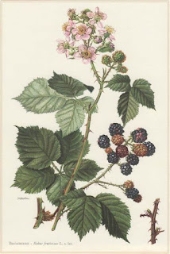
 2
2




Sovereign Homestead Design www.TheSovereignHomestead.com
 2
2




Examine your lifestyle, multiply it by 7.7 billion other ego-monkeys with similar desires and query whether that global impact is conscionable.




V Kay wrote:
Anne Miller wrote:Last winter I overwintered purslane indoors. It was in my shower for a month while I was on vacation. Of course it did not bloom. It is said to be edible but I have not tried it...
Anne, if you've not yet braved trying the purslane, please do! We use it in Verdolagas, and *love* it. It'll self-sow if you let it escape outdoors, too. And those Omega-3 EFAs are soooo good for you!
Invasive plants are Earth's way of insisting we notice her medicines. Stephen Herrod Buhner
Everyone learns what works by learning what doesn't work. Stephen Herrod Buhner

 2
2





By 2009, Jacobson was well under way on a new project: He’s compiled 1,156 genera of edible houseplants, and he’s not done. “Up to 76.5 percent of all houseplants are edible, but that doesn’t mean they’re good to eat,” he says.
QuickBooks set up and Bookkeeping for Small Businesses and Farms - jocelyncampbell.com
 2
2





 2
2




Casey Pfeifer wrote:I’ve had good success with California Woodland Strawberry (Fragaria vesca var. Californica) in heavy shade outdoors and dappled light underneath overhangs in hanging planters. While you probably won’t get tons of fruit if they don’t have at least some light, mine started fruiting underneath the black walnut canopy where they were the predominant groundcover in their second year with zero direct sunlight. Due to their prolific runners these plants create awesome cascades of strawberry foliage and red internode stems, up to 8’ long when I last measured!
Hans Albert Quistorff, LMT projects on permies Hans Massage Qberry Farm magnet therapy gmail hquistorff
 2
2





~ Dragons, Fairies and even a Mini-Paul! ~ You Know You're a Permie When...~ All About Permies, including tutorials ~Herbal Hugel Spiral of Randomness!~Tricks to Keep the Dirt from Sliding off a Hugel~List of Cascadia Bloggers and Facebook Pages!~
for the full sized jumbo image https://i.redd.it/jo8gp2f3w8461.jpg




“Action on behalf of life transforms. Because the relationship between self and the world is reciprocal, it is not a question of first getting enlightened or saved and then acting. As we work to heal the earth, the earth heals us.” ~ Robin Wall Kimmerer

|
He was expelled for perverse baking experiments. This tiny ad is a model student:
Learn Permaculture through a little hard work
https://wheaton-labs.com/bootcamp
|




